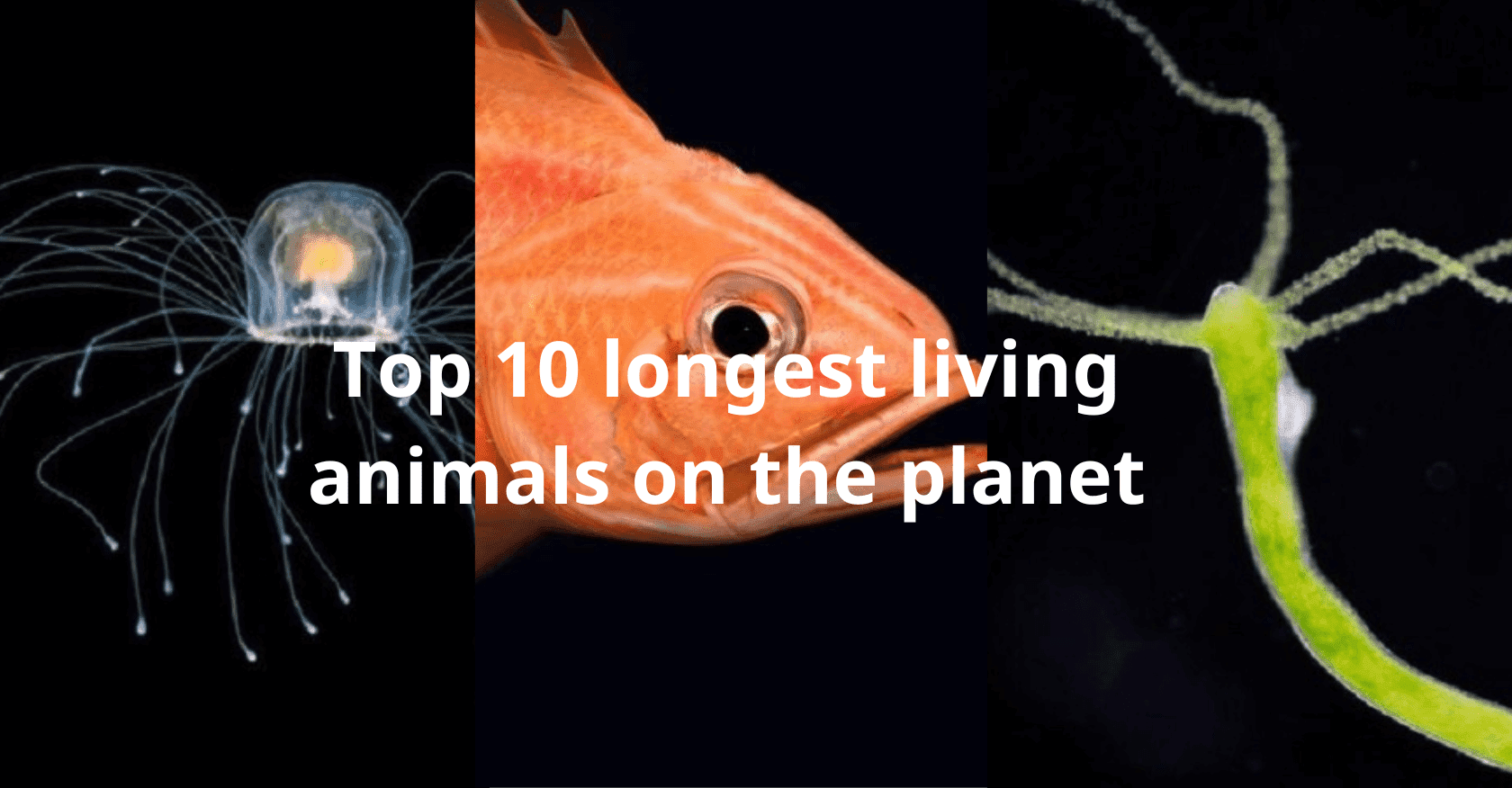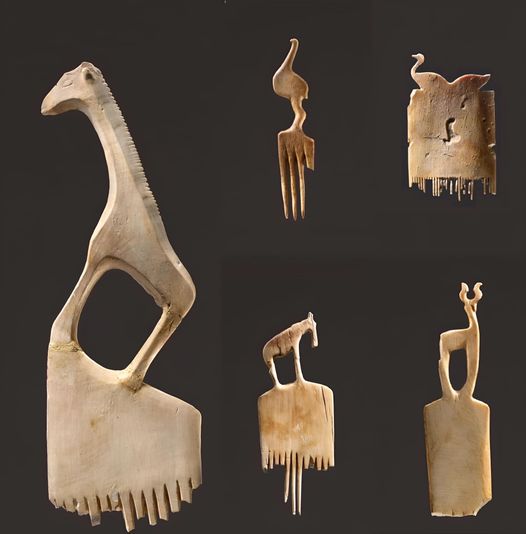Top 10 longest living animals on the planet
The animal kingdom prides itself on having an extremely long lifespan, far exceeding the average human lifespan. While humans may have an "absolute limit" of 150 years, which is just a blink of an eye compared to the millennia-old lifespans of some animals, they may even be able to completely prevent or reverse this. the whole aging process.
Although there are animals that have lived on land for a very long time (the oldest tortoise is almost 190 years old, for example), they do not make this list. The real age champions all live in the country. Here are the 10 longest living animals in the world.
1. Bowhead whale: live more than 200 Years

A bowhead whale in the waters near Qikiqtaaluk Region, Nunavut, northern Canada.
The bowhead whale (Balaena mysticetus) is the longest living mammal. Their exact lifespan is unknown, but fossils found in some individuals demonstrate that they lived for more than 100 years or even 200 years, according to the National Oceanic and Atmospheric Administration. (NOAA) of the United States.
Whales have mutations in a gene called ERCC1, which is involved in repairing damaged DNA, which may help protect whales from cancer, a cause of death. Furthermore, another gene, called PCNA, has a duplicated part. This gene is involved in cell growth and repair, and duplication can slow down the aging process.
2. Rougheye fighting fish: live over 200 Years

Sebastes aleutianus
The Rougheye fighting fish (Sebastes aleutianus) is one of the longest living fish species and has a maximum lifespan of at least 205 years, according to the Washington Department of Fish and Wildlife. These pink or brown fish live in the Pacific Ocean from California to Japan. They grow to 38 inches (97 cm) long and feed on other animals such as shrimp and smaller fish, according to the Endangered Wildlife Commission in Canada (COSEWIC), an independent advisory panel that assesses the state of wildlife. status of endangered species in Canada.
3. Freshwater pearls: live over 250 years

Freshwater mussels of the genus Margaritifera
Freshwater pearl mussels (Margaritifera margaritifera) are bivalves that filter food particles out of the water. They mainly live in rivers and streams and are found in Europe and North America, including the United States and Canada. The oldest known freshwater pearl is 280 years old, according to the World Wildlife Fund (WWF). These invertebrates have a long lifespan due to their low metabolism.
The freshwater pearl mussel is an endangered species, due to many human-related factors such as climate change, habitat change.
4. Greenland shark: live over 272 years

Greenland shark
The Greenland shark (Somniosus microcephalus) lives in the depths of the Arctic and North Atlantic Oceans. A 2016 study of the eye tissue of Greenland sharks, published in the journal Science, estimated that these sharks have a maximum lifespan of at least 272 years. The largest shark in the study was estimated at 392 years old and researchers think these sharks could have been up to 512 years old, This shark became the longest living vertebrate on the planet. Earth.
5. Tubeworms: live over 300 years old

Pipe worms on the bottom of the ocean
Tubeworms are invertebrates that live long in the cold, stable environment of the deep sea. A 2017 study published in the journal Nature Science found that Escarpia laminata, a tubeworm that lives on the ocean floor in the Gulf of Mexico, lives up to 200 years, and some specimens live longer. 300 years. Tubeworms have a low mortality rate because they are less exposed to natural threats, which has given them such a long lifespan.
6. Quahog ocean clam: live over 500 Years

A quahog clam on the beach in Cape Cod, Massachusetts
The ocean quahog clam (Arctica islandica) lives in the North Atlantic Ocean. This saltwater species can live longer than the freshwater pearls mentioned above. According to the National Museum of Wales in the UK, an ocean quahog clam found off the coast of Iceland in 2006 is 507 years old.
7. Black coral: live more than 4,000 years

Black coral dust on the reef
Corals look like colorful rocks and aquatic plants, but they're made up of an invertebrate exoskeleton known as a polyp. These polyps continuously multiply and replace themselves by creating a genetically identical copy, which over time causes the coral's exoskeleton structure to grow larger and larger. Therefore, corals are made up of many identical organisms rather than a single organism, like the Greenland shark or the ocean quahog mussel.
Corals can live for hundreds of years or more, but deepwater black corals (Leiopathes sp.) are among the longest living corals. Samples of black coral found off the coast of Hawaii are 4,265 years old.
8. Glass sponge: love over 10,000 years

Glass sponge
Sponges are made up of herds of animals, which are similar to corals and can also live for thousands of years. Glass sponges are among the longest living sponges on Earth. Members of this group are commonly found in the deep ocean and have glass-like skeletons. A 2012 study published in the journal Chemical Geology estimated that a glass sponge belonging to the species Monorhaphis chuni was about 11,000 years old. Other sponge species can live even longer.
9. Turritopsis jellyfish have the ability to be immortal

An immortal Turritopsis jellyfish off the coast of Palm Beach in Florida.
Turritopsis dohrnii are called immortal jellyfish because they have the ability to live forever. Jellyfish begin life as larvae, before living on the seafloor and transforming into polyps. These polyps then produce free-swimming jellyfish. According to the American Museum of Natural History, adult Turritopsis dohrnii can turn back into polyps if they are physically damaged or starved and then revert back to their jellyfish state.
Jellyfish, native to the Mediterranean Sea, can repeat the feat of reversing their life cycle many times and thus they never die of old age. Turritopsis dohrnii are very small - less than 0.2 inches (4.5 mm) so regardless of their age they are often eaten by other animals such as fish.
10. Hydra jellyfish also have the ability to be Portal

A photo of Hydra, a tiny invertebrate that can be immortal.
Hydras are a group of small invertebrates with mollusks that look a bit like jellyfish. Like Turritopsis dohrnii, Hydras also have the potential to live forever. Hydras show no signs of decline with age. These invertebrates are largely made up of stem cells, which continuously regenerate through duplication or cloning. Hydras do not live forever in the wild because of threats like predators and disease, but without these external threats, they are immortal.






